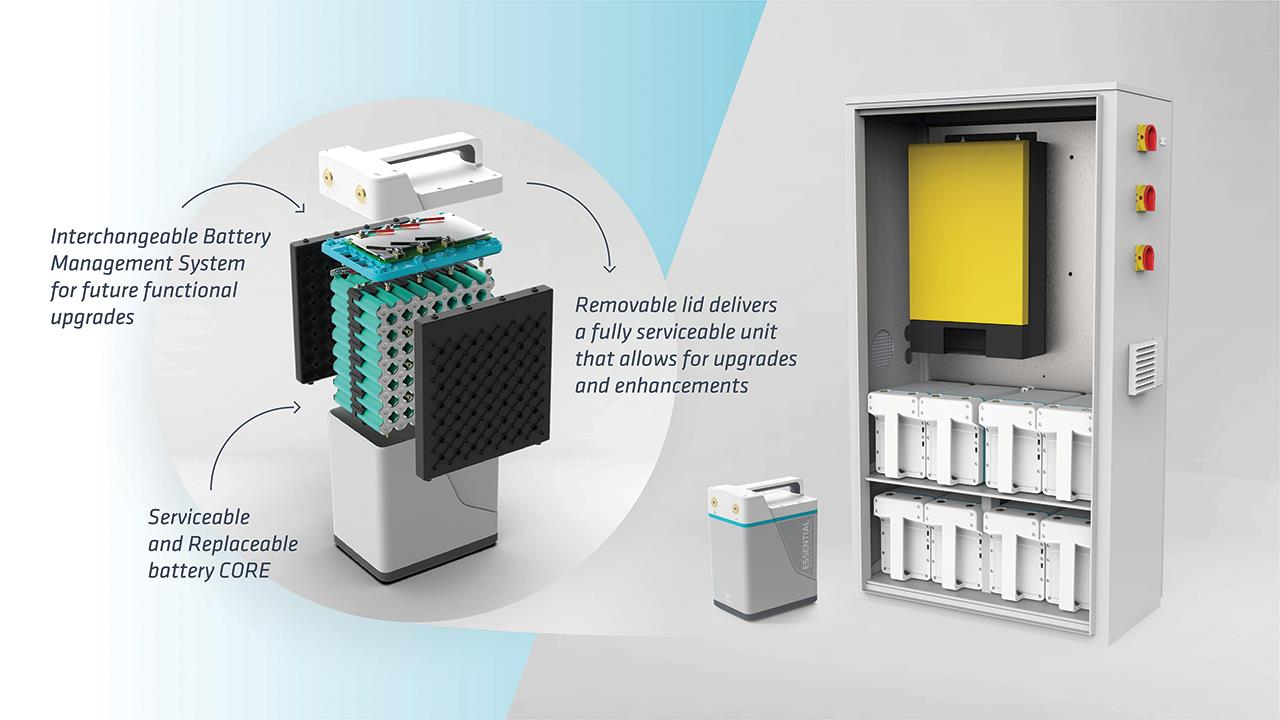

As a result of rising energy prices and the subsequent increase in demand for solar PV, we are seeing significant interest in battery energy storage systems (BESS) and their potential to reduce energy bills and carbon emissions.
Where to start
BESS provide customers with a cost-effective way to store excess energy generated by renewable sources, and use it at a later time (at night, for instance). They can also work with the grid, charging during off-peak hours and powering the home or selling excess renewable energy to the grid when energy costs are higher.
Most types of BESS are relatively simple to install, however there are some important things to consider.
Just as with traditional boiler installations, where the building determines whether a customer needed a combi or system boiler, for instance, the space will tell you what sort of BESS installation is most appropriate, so a site visit is going to be essential before specifying the system.
Tailored solution or all-in-one?
Whether to install a tailored or an all-in-one BESS depends primarily on what the space allows for.
A tailored system provides more flexibility as each part (inverter, power management system, batteries, etc.) can be fitted separately. This type of system works best in areas where space is tight, such as under the stairs or in lofts, but often takes longer to size, specify, and install. It’s also absolutely essential to ensure that each component is compatible with the others.
If there is space, an all-in-one system is preferable as these tend to have a quicker, easier, and lower cost installation process, as all the separate components and wiring are pre-assembled and contained in one cabinet. This also provides more certainty in terms of long-term performance.
They have the added benefit of being easily transportable; if the customer moves location, the BESS can be disconnected and moved too.
All-in-one solutions can also be modular, which is an important consideration as power needs can change over time.
AC or DC coupling
There are two types of battery installation systems, known as AC and DC coupling. AC or DC coupling refers to the way solar panels link to a battery or energy storage system.
AC coupling is required when the BESS charges via solar as well as the grid, and is the ideal solution when it is not possible to fit all the components close together – often due to space constraints or the location of the distribution board. AC systems are also the better choice for retrofitting projects – where panels are already in place.
DC coupling is suitable for new installations where everything can be installed in one location, close to the distribution board.
Short-term vs. long-term gain
They’re becoming more affordable, but BESS still represent a significant investment. Customers will understandably want to be sure that they are getting the most efficient system possible and will be saving money in the long run.
To make sure you are providing the customer with the best total cost of ownership, you’ll want to offer a battery solution with a good lifespan, and servicing and warranty options. Warranties are usually ‘limited’ by most manufacturers, so need to be looked at very carefully.
Aceleron’s Offgen, for instance, comes with a 10 year system warranty, though the batteries – the only component within the system that can ‘wear out’, is warranted to 3,000 cycles (a cycle being one discharge and recharge).
Final checks
Before commissioning, a system test must be carried out on all installations as follows:
Take extra care when checking tailored systems – the more parts there are to a system, the more opportunities there are for unexpected situations to develop.
All that remains is to talk the customer through the basics of operating the system and ensure that they have working access to the remote app.
With remote monitoring, you can keep tabs on operational performance from anywhere – meaning you can move on to the next job and check in later when the system has had time to charge.
ANSWERING COMMON CUSTOMER QUESTIONS
Can you retrofit the BESS system into an existing solar installation?
Yes – retrofitting a battery storage system is possible as long as there’s enough space to fit it.
How will I know if the system is providing enough energy to power the home?
Battery energy storage systems have different capacities. A single Offgen system, for example, ranges from 5-12kWh of energy storage. Should more power be required, for light commercial use, for instance, up to three units can be set up in parallel, which translates into providing as much as 26.4kW of AC power and 33.6kWh of capacity, single or 3-phase.
With most products, the system will speak remotely to an app that will let the customer know how much energy is produced (depending on the solar panels’ output), stored (in the BESS), and used (by the household).
Will it need servicing like a boiler?
Upkeep servicing, just as for boilers, will be necessary and involves preventative maintenance on power management components as well as updates to the management systems to course-correct any improper performance trends.
If you'd like to keep up-to-date with the latest developments in the heating and plumbing industry, why not subscribe to our weekly newsletters? Just click the button below and you can ensure all the latest industry news and new product information lands in your inbox every week.